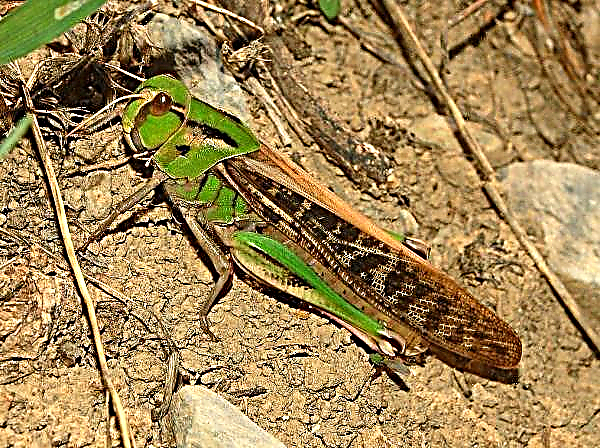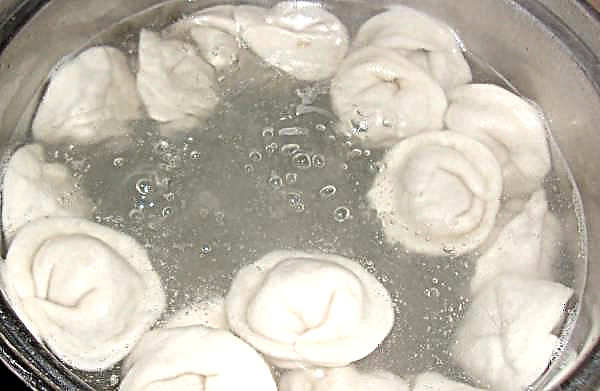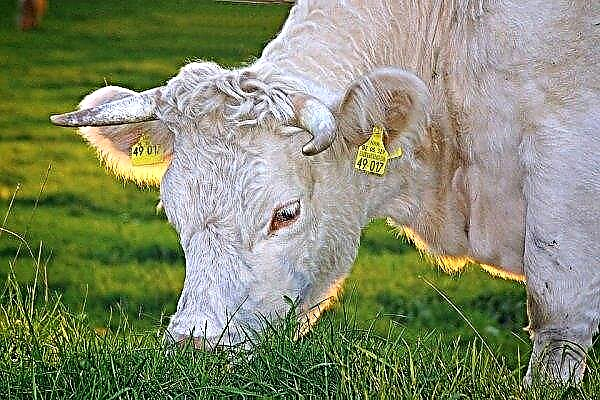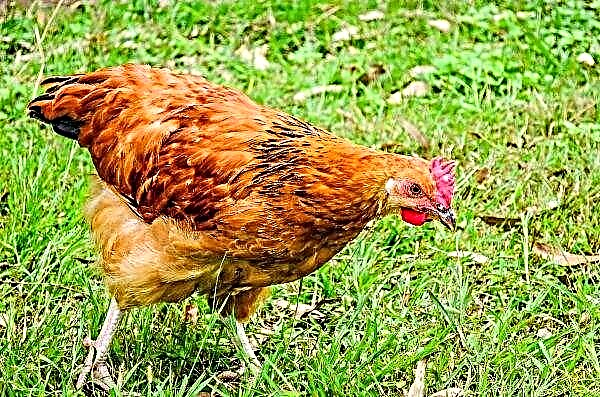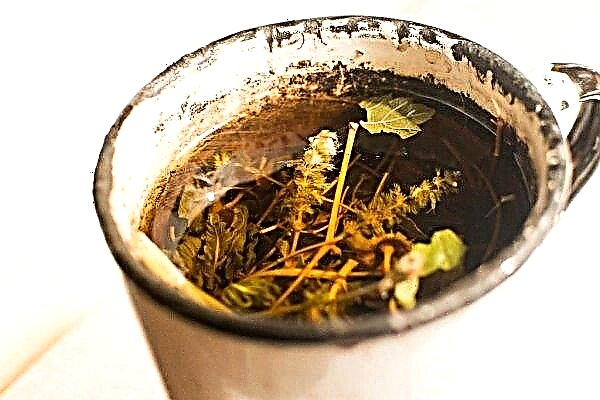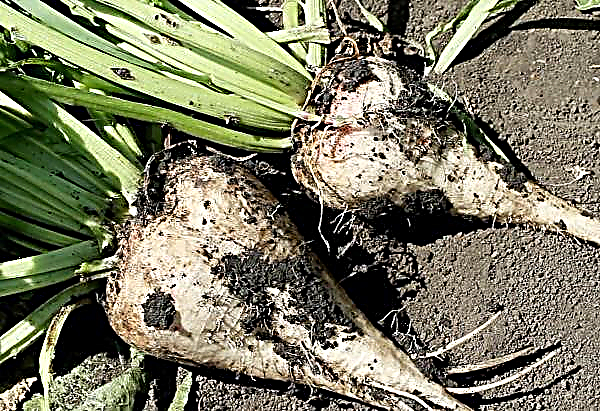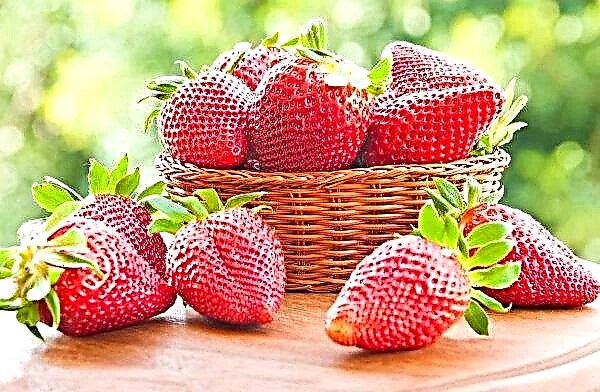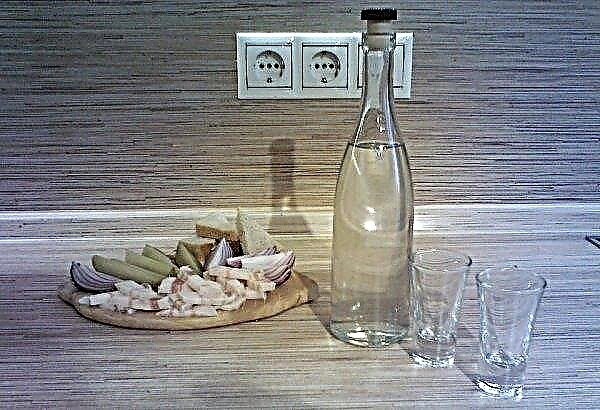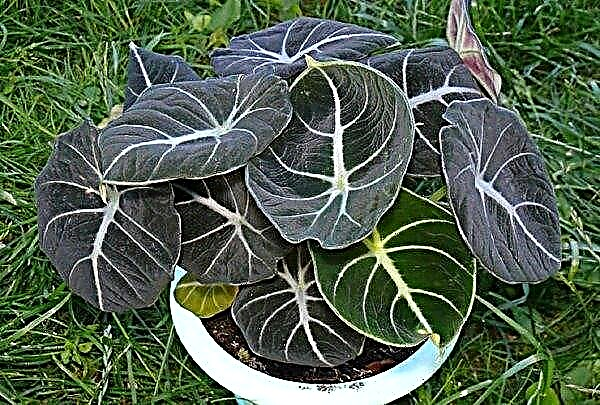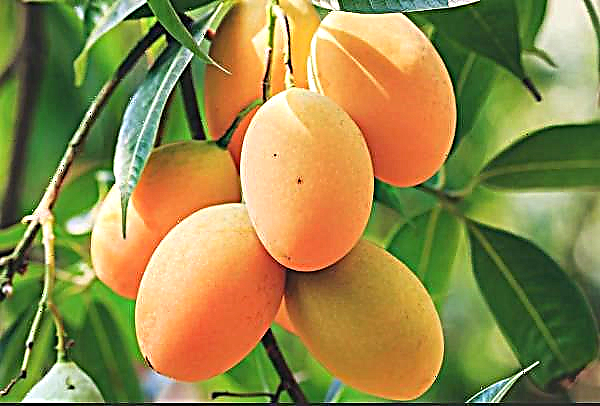The Cypress family is represented by many species. Juniperus davurica is one of the genus Juniper. This evergreen plant was described at the end of the XVIII century by the German scientist P. S. Pallas in his work “Flora of Russia”. The shrub is also called stone heather, and the Nanai people call it “apa-ngkura” and are used in the ritual of purification.
Botanical Description
Juniper Daurian is a creeping bush. Its shoots are slightly directed upwards - they rise closer to the ends. The species is able to grow in rocky terrain. Interestingly, the main trunk is usually hidden underground. On the slopes of the mountains can form groups or sprout alone.

View description:
- Needles - needle and rhombic scale-like. Thick, up to 8 mm long, light green in color. It becomes a brown winter.
- Crown - the maximum diameter is 75 cm. It consists of many thin shoots up to 3 m in length.
- Branches ages one hundred years thicken up to 50 mm.
- Bark - gray, peeling.
- Bumps - dark blue or brown with a touch of a bluish tint. Spherical, about 5 mm.
- Shrub height - stunted, not higher than 0.5 m.
- Seeds protrude from the cone. Their number is 2 or 4 pieces.
Did you know? Creeping branches in the natural environment are able to root themselves if they come into contact with the soil.
Popular varieties of Daurian juniper
Expansa variegata and Leningrad are well-known varieties of Daurian juniper.
The description of the first is as follows:
- ornamental horizontal shrub;
- the branches are straight, everything is complexly intertwined, the lower shoots spread along the ground;
- plant height - up to 45 cm;
- diameter - up to 2.5 m;
- the color of the needles is double - light green and cream;
- excellent frost resistance;
- excellent unpretentiousness to the soil and conditions.

Leningrad is characterized by:
- the same height;
- shoot length up to 2 m;
- pillow-shaped crown;
- sprouting of roots on shoots;
- dense and prickly green needles with a bluish tint;
- preference in loamy and neutral soils;
- an average increase of 5 cm.

Both varieties look great in stone gardens, used for rock gardens. Combine with other dwarf conifers to create group plantings.
Landing
There are two optimal ways to plant this variety:
- seedling;
- transplant.
That is, even an adult shrub can be dug up and moved to another place. Any plant - a young seedling or an adult juniper - should be planted in April. You can hold the event in the fall, but only in the period before the frost.
Did you know? Juniper has been growing on earth for at least 50 million years. This is an ancient clan.
Seedling preparation
The planted plant should look good. Rotten or, conversely, dried up is not suitable. The most important thing is the presence of needles on the seedling.
In order to plant a bush, you need:
- The collected shoots of young juniper can be tied up for convenience.
- It is necessary to extract the roots together with a lump of soil.
- It is useful to stimulate the root system with a growth stimulant - lower it into the remedy for a couple of hours.

Site selection and preparation
You can prepare a sunny landing spot in advance:
- dig the ground and rid it of weed;
- make a hole at least half a meter in depth, but the width should be 15 cm greater than the earthen lump of roots;
- add peat and sand to the planting recess, which must be drained with crushed stone.
Important! Observe the half-meter distance between the plantings of Daurian juniper.
Landing process
Landing Instructions:
- Drain the planting site.
- Add dolomite flour (at 50 g per 1 bucket) or alkaline fertilizer to the soil mixture (with sand and peat).
- Pour the prepared soil into the pit to 1/2 depth.
- Set a seedling in the middle of the pit and carefully spread the roots.
- Then start filling up the entire soil mixture.
- Compact the soil around the seedling and water it.

Juniper Care
Unpretentious Daurian juniper needs ordinary care in the form of watering. It is recommended to remove weeds around the plant and form its crown.
Watering
The species prefers moderate hydration. Conducting evening irrigation every other day is acceptable for a young seedling. If there is too little rainfall, then in the next couple of months it’s worth it to water the juniper. At the time of the summer heat, the shrub needs sprinkling. An adult bush does not need additional moisture.
Top dressing
You can fertilize the plant for the first two years in April with the following means:
- nitroammophos - 40-50 g per 1 m²;
- such drugs as Stimovit (100 ml per 4 liters of water).
Do not overdo it with top dressing, it is also not recommended to fertilize in the fall.
Loosening and mulching
Immediately after planting, you can mulch the earth under the bush. Used for this sawdust, bark and needles. Mulch must be replaced - do it right in the fall. With this care weeds should not be.
If they appear, then they must be removed, and it is important to loosen the soil before the bush has grown. Over time, the mulched soil and the abundance of creeping crown will themselves contribute to maintaining moisture, friability.

Pruning
Sanitary pruning in the spring is to remove all damaged shoots. The juniper is frost-resistant, it can perfectly winter and not freeze. Crown formation is completely individual. Each gardener can cut the shrub once a year based on his taste and in accordance with the design of the site. Such a frequency is enough, this species will not grow rapidly.
Winter preparations
Before the onset of winter, it is important to add moisture - to carry out additional charging watering. You need to change the layer of mulch and make it thicker (above 5 cm). Recently planted plants at the end of autumn should be tied up: gather branches and tie them together without tightening. This is done to protect against damage by heavy snow cover.
 It is recommended to cover with spruce branches. All of these measures are applicable for young juniper, while an adult shrub does not need care for the winter.
It is recommended to cover with spruce branches. All of these measures are applicable for young juniper, while an adult shrub does not need care for the winter.
Possible diseases and pests
Juniper diseases are as follows:
- Fungal infections. Reasons: high humidity, lack of space and light. Fight: removal and destruction of affected areas, treatment with fungicide. Prevention - watering with fungicidal solutions in April.
- Crayfish. Fight: destruction of damaged material, a solution of copper oxychloride is used as a treatment for the remaining sections of shrub branches. Prevention: use after trimming copper sulfate.

- Burns - winter (rays reflected by snow) and spring (first bright sun). Help: Ecoberin-type preparations are sprayed several times.
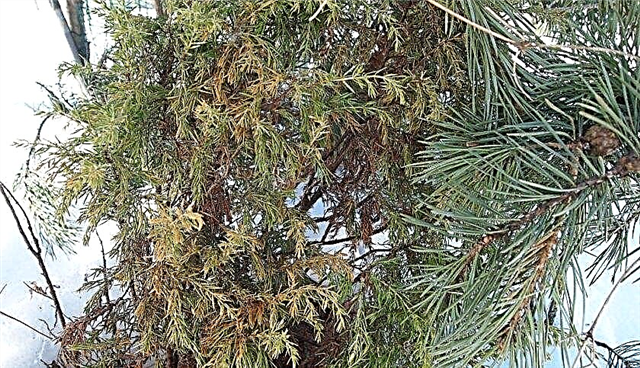
Daurian juniper has enemies in the insect world:
- aphid;
- sawflies;
- scale shield;
- ticks.
The first and second pests are collected manually. If, for example, shoots are densely planted with aphids, then it is better to trim them. Next you need to apply Karbofos (the instructions of the product always depend on the type of plant to which it is applied).
Scaffolds do not settle in humid conditions, so sprinkling and treatment with a soapy solution of the bush will be a reliable measure of pest control. If the insects of this species do not leave the juniper, then an insecticide should be used. Against a spider mite, colloidal sulfur (cumulus) is recommended in the form of sprayings with a weak solution (less than half percent).
Important! Do not plant the described species in close proximity with fruit crops, because they can infect the coniferous plant with rust.
Breeding methods
The lay-off method of reproduction is the most optimal. It is necessary to choose an escape of two years of age and press it to the ground so that it is fixed in this position. Sprinkle with soil the rooting site. Within one full year, the branch takes root, then it can be separated and transplanted.
Video: Juniper propagation by layering
Cuttings not as popular as breeding material. In May, more mature branches are taken - three-year-old. They should be treated with a root growth stimulator, and then planted directly in the soil under greenhouse conditions. Seedlings of cuttings can be transplanted to another place only next year.
Seed way distribution is that you should collect the cones, take out the seeds from them, fill them with water, which is constantly important to change during the week. Then subjected to heat and stratification. Sow seeds treated in advance with Epin, preferably in April.
Graft - An interesting way to reproduce. As a rule, ordinary juniper is used, the diameter of which is equal to the diameter of the scion. Places of oblique sections are joined, pressed very tightly, tied and covered with garden var.
Use in landscape design
Undemanding juniper Daurian - an excellent coniferous plant, it is popular in landscape design. The creeping cover shrub is interesting in that it looks like a background, the bottom layer of the overall picture of both the city park area and a private garden. The view can be used in rock gardens, its shoots beautifully descend along the rocky slopes.

An undersized bush looks interesting as a decoration of the shores of a small reservoir. Such decorative representatives of conifers look great as a part of landscaping architectural forms. Roofs of buildings, various stone structures and even fences can be decorated with flowerpots and containers with plants.
Did you know? In Russia, dishes were made from juniper bark in which milk did not spoil.
Daurian juniper will certainly appeal not only to professional gardeners and designers, but also to summer residents, lovers of greenery. Designing a personal site, flowerbed, or any complex zone will not require special efforts. This comfortable coniferous species of the Cypress family is an ideal part of landscaping the space.



